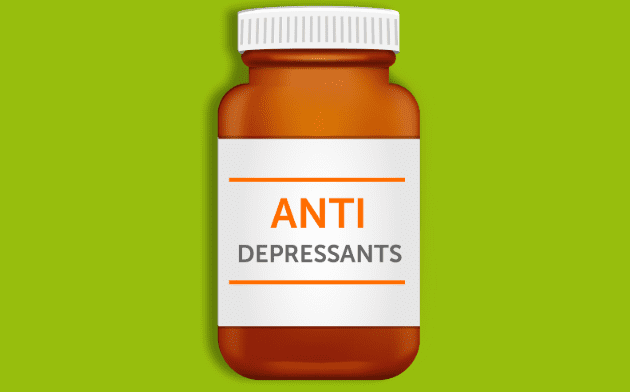Fibromyalgia is a chronic condition characterized by widespread pain, fatigue, and sleep disturbances, often accompanied by cognitive challenges referred to as “fibro fog.” While there is no cure for fibromyalgia, various treatments aim to manage its symptoms and improve the quality of life. One common treatment option is the use of antidepressants, but why are these medications prescribed for fibromyalgia? How effective are they, and what should patients know before starting them? This article dives into the relationship between antidepressants and fibromyalgia to provide clarity on their role in managing the condition.
The Connection Between Antidepressants and Fibromyalgia
At first glance, the use of antidepressants for a pain-related condition like fibromyalgia may seem unusual. However, their effectiveness stems from how fibromyalgia affects the nervous system and the brain’s pain processing mechanisms.
How Antidepressants Work for Fibromyalgia
Antidepressants target neurotransmitters in the brain, such as serotonin, norepinephrine, and dopamine. These chemicals play a role not only in mood regulation but also in how the brain processes pain signals. Fibromyalgia is often associated with an overactive pain response, where the brain amplifies pain signals. Antidepressants can help modulate these signals and reduce the perception of pain.
Types of Antidepressants Prescribed for Fibromyalgia
Not all antidepressants are equally effective for fibromyalgia. Below are the main types prescribed:
1. Tricyclic Antidepressants (TCAs)
- Examples: Amitriptyline, Nortriptyline.
- How They Help: TCAs are among the oldest classes of antidepressants and are known for their ability to improve sleep and reduce pain. Amitriptyline, in particular, is commonly prescribed at low doses to enhance sleep quality and relieve muscle pain in fibromyalgia patients.
2. Serotonin-Norepinephrine Reuptake Inhibitors (SNRIs)
- Examples: Duloxetine (Cymbalta), Milnacipran (Savella).
- How They Help: SNRIs are FDA-approved for fibromyalgia treatment. They increase serotonin and norepinephrine levels, reducing pain and improving mood. Duloxetine is particularly effective for patients with coexisting depression and anxiety, common in fibromyalgia.
3. Selective Serotonin Reuptake Inhibitors (SSRIs)
- Examples: Fluoxetine (Prozac), Sertraline (Zoloft).
- How They Help: SSRIs primarily target serotonin levels and are sometimes prescribed for fibromyalgia, especially if depression is a significant concern. However, they are not as commonly used for pain management compared to TCAs or SNRIs.
Benefits of Antidepressants for Fibromyalgia
Antidepressants offer several advantages for fibromyalgia patients:
- Pain Reduction: By altering the brain’s pain processing pathways, antidepressants can reduce the intensity of pain.
- Improved Sleep: Many patients report better sleep quality, which is essential for managing fibromyalgia symptoms.
- Mood Enhancement: Depression and anxiety are common in fibromyalgia, and antidepressants can help stabilize mood.
- Fatigue Relief: Some types, particularly SNRIs, may alleviate fatigue by enhancing norepinephrine levels.
Potential Drawbacks and Side Effects
While antidepressants can be effective for fibromyalgia, they are not without potential downsides:
- Side Effects: These may include weight gain, nausea, dizziness, dry mouth, and drowsiness. Each type of antidepressant has a unique side effect profile.
- Limited Effectiveness for Some Patients: Not all individuals with fibromyalgia respond well to antidepressants, and their benefits can vary.
- Dependency Concerns: Although antidepressants are not addictive, some patients may rely on them for symptom management and find it challenging to stop.
- Delayed Effect: It may take weeks to notice significant symptom relief.
Are Antidepressants the Right Choice for Everyone?
Antidepressants are not a one-size-fits-all solution for fibromyalgia. Healthcare providers often consider several factors before prescribing them, including:
- Symptom Severity: Antidepressants are typically more effective for patients with severe pain, depression, or sleep disturbances.
- Coexisting Conditions: If a patient has anxiety or depression alongside fibromyalgia, antidepressants may provide dual benefits.
- Individual Response: Trial and error are sometimes necessary to find the most effective medication.
Complementary Approaches to Antidepressants
Antidepressants are often most effective when combined with other fibromyalgia management strategies:
- Physical Therapy: Gentle exercises can help improve mobility and reduce stiffness.
- Cognitive Behavioral Therapy (CBT): This psychological approach helps patients manage the mental and emotional aspects of chronic pain.
- Dietary Changes: Eating anti-inflammatory foods may help reduce symptom severity.
- Alternative Therapies: Acupuncture, massage, and yoga can complement the benefits of antidepressants.
Conclusion
Antidepressants play a significant role in managing fibromyalgia by targeting the brain’s pain pathways and improving associated symptoms like depression and sleep disturbances. However, they are not a cure and may not work for everyone. A tailored, multidisciplinary approach combining medication, lifestyle changes, and alternative therapies is often the most effective strategy for managing fibromyalgia. If you’re considering antidepressants for fibromyalgia, consult your healthcare provider to determine the best treatment plan for your unique needs.

Click Here to Visit the Store and find Much More….
For More Information Related to Fibromyalgia Visit below sites:
References:
Fibromyalgia Contact Us Directly
Click here to Contact us Directly on Inbox
Official Fibromyalgia Blogs
Click here to Get the latest Chronic illness Updates
Fibromyalgia Stores


